L.1
L.2
L.3
L.4
L.5
L.6
Chapter 1 Solutions
Chapter 2 Solutions
Chapter 3 Solutions
Chapter 4 Solutions
Chapter 5 Solutions
Chapter 6 Solutions
L-2
L-7
L-20
L-30
L-46
L-52
�
L
Solutions to Case Study
Exercises
�
L-2
I
Appendix L
Solutions to Case Study Exercises
L.1
Chapter 1 Solutions
Case Study 1: Chip Fabrication Cost
1.1
a.
Yield
=
+
1
0.7 × 1.99
4–
-------------------------
4.0
=
0.28
b.
Yield
=
+
1
0.75 × 3.80
4–
----------------------------
4.0
=
0.12
c.
The Sun Niagara is substantially larger, since it places 8 cores on a chip rather
than 1.
1.2
a.
Yield
=
+
1
0.30 × 3.89
4–
----------------------------
4.0
=
0.36
Dies per wafer
=
)2
π × 30 2⁄
------------------------------
(
3.89
–
π × 30
(
----------------------------------
)
sqrt 2 × 3.89
=
182 33.8
–
=
148
Cost per die
=
$500
--------------------------
148 × 0.36
=
$9.38
Yield
=
+
1
.7 × 1.86
4–
----------------------
4.0
=
0.32
Dies per wafer
=
)2
π × 30 2⁄
------------------------------
(
1.86
–
π × 30
(
----------------------------------
)
sqrt 2 × 1.86
=
380 48.9
–
=
331
Cost per die
=
$500
-----------------------
331 × .32
=
$4.72
×
.4 = $3.75
$9.38
×
Selling price = ($9.38 + $3.75)
2 = $26.26
Profit = $26.26 – $4.72 = $21.54
×
500,000 = 1,500,000/month
Rate of sale = 3
×
Profit = 1,500,000
$21.54 = $32,310,000
$1,000,000,000/$32,310,000 = 31 months
Yield
=
=
0.71
+
1
.75 × 3.80 8⁄
4–
--------------------------------
=
=
Prob of error
4.0
–
1 0.71
0.29
×
×
7
8 = 0.21
0.71
Prob of one defect = 0.29
×
×
2
6
Prob of two defects = 0.29
0.71
28 = 0.30
×
Prob of one or two = 0.21
0.30 = 0.51
8
0.71
= .06 (now we see why this method is inaccurate!)
b.
c.
d.
e.
1.3
a.
b.
c.
�
L.1 Chapter 1 Solutions
I
L
3
-
d.
e.
0.51 ⁄ 0.06 = 8.5
×
×
$1.50 = $200,000,000
$150 + 8.5
x
x
= 885,938 8-core chips, 8,416,390 chips total
x
×
$100 – (9.5
x
×
$80) – 9.5
x
Case Study 2: Power Consumption in Computer Systems
1.4
a.
b.
c.
1.5
a.
×
3.7 + 2
×
7.9
= 146
x
= 79 + 2
x
.70
×
4.0 W
.4 + 7.9 W
The 7200 rpm drive takes 60 s to read/seek and 40 s idle for a particular job.
×
The 5400 rpm disk requires 4/3
60 s, or 80 s to do the same thing. There-
fore, it is idle 20% of the time.
×
.6 = 6.34 W
------------------------------------------------------------
)
(
79 W 2.3 W 7.0 W
14 KW
+
+
=
158
b.
14 KW
----------------------------------------------------------------------
)
(
+ × 7.0 W
79 W 2.3 W 2
+
=
146
c.
MTTF
=
1
------------------
9 × 106
+
8 ×
1
------------
4500
+
1
------------------
3 × 104
=
8 × 2000
300
-------------------------------------
+
9 × 106
=
16301
------------------
9 × 106
1
---------------------------
Failure rate
=
9 × 106
------------------
16301
=
522 hours
1.6
a.
See Figure L.1.
SPECjbb
SPECweb
Sun Fire T2000
IBM x346
213
42.4
91.2
9.93
Figure L.1
Power/performance ratios.
b.
c.
a.
b.
1.7
Sun Fire T2000
More expensive servers can be more compact, allowing more computers to be
stored in the same amount of space. Because real estate is so expensive, this
is a huge concern. Also, power may not be the same for both systems. It can
cost more to purchase a chip that is optimized for lower power consumption.
50%
Power new
--------------------------
Power old
=
)2 × F × 0.50
)
(
V × 0.50
(
--------------------------------------------------------------
V 2 × F
=
0.53
=
0.125
c.
=
.70
)
-------------------------------- ; x
x–(
1
x 2⁄+
=
60%
�
L-4
I
Appendix L
Solutions to Case Study Exercises
d.
Power new
--------------------------
Power old
=
)2 × F × 0.50
)
(
V × 0.70
--------------------------------------------------------------
V 2
(
× F
=
0.72 × 0.5
=
0.245
Case Study 3: The Cost of Reliability (and Failure) in Web
Servers
1.8
a.
b.
×
14 days
$1.4 million⁄day = $19.6 million
$4 billion – $19.6 million = $3.98 billion
Increase in total revenue: 4.8/3.9 = 1.23
In the fourth quarter, the rough estimate would be a loss of 1.23
lion = $24.1 million.
×
$19.6 mil-
c. Losing $1.4 million × .50 = $700,000 per day. This pays for $700,000/$7,500
d.
= 93 computers per day.
It depends on how the 2.6 million visitors are counted.
If the 2.6 million visitors are not unique, but are actually visitors each day
summed across a month: 2.6 million × 8.4 = 21.84 million transactions per
month. $5.38 × 21.84 million = $117 million per month.
If the 2.6 million visitors are assumed to visit every day: 2.6 million × 8.4 ×
31 = 677 million transactions per month. $5.38 × 677 million = $3.6 billion
per month, which is clearly not the case, or else their online service would not
make money.
1.9
a. FIT = 109⁄ MTTF
MTTF = 109⁄ FIT = 109⁄ 100 = 10,000,000
b.
Availability
=
MTTF
---------------------------------------
MTTF MTTR
+
=
107
--------------------
107
24+
=
about 100%
1.10 Using the simplifying assumption that all failures are independent, we sum the
probability of failure rate of all of the computers:
Failure rate = 1000 × 10–7 = 10–4 =
105
--------
109
FIT = 105, therefore MTTF =
109
--------
105
= 104
1.11
a. Assuming that we do not repair the computers, we wait for how long it takes
for 3,334 computers to fail.
3,334 × 10,000,000 = 33,340,000,000 hours
b. Total cost of the decision: $1,000 × 10,000 computers = $10 million
Expected benefit of the decision: Gain a day of downtime for every
33,340,000,000 hours of uptime. This would save us $1.4 million each
3,858,000 years. This would definitely not be worth it.
�
L.1 Chapter 1 Solutions
I L-5
Case Study 4: Performance
1.12
a. See Figure L.2.
Chip
Memory performance
Dhrystone performance
Athlon 64 X2 4800+
Pentium EE 840
Pentium D 820
Athlon 64 X2 3800+
Pentium 4
Athlon 64 3000+
Pentium 4 570
Widget X
1.14
1.08
1
0.98
0.91
0.98
1.17
2.33
1.36
1.24
1
1.13
0.5
0.5
0.74
0.33
Figure L.2 Performance of several processors normalized to the Pentium 4 570.
b. See Figure L.3.
Chip
Athlon 64 X2 4800+
Pentium EE 840
Pentium D 820
Athlon 64 X2 3800+
Pentium 4
Athlon 64 3000+
Pentium 4 570
Processor X
Arithmetic mean
Arithmetic mean of
normalized
12070.5
11060.5
9110
10035
5176
5290.5
7355.5
6000
1.25
1.16
1
1.05
0.95
0.95
0.77
1.33
Figure L.3 Arithmetic mean of several processors.
c. The arithmetic mean of the original performance shows that the Athlon 64 X2
4800+ is the fastest processor.
The arithmetic mean of the normalized processors shows that Processor X is
the fastest processor.
d. Single processors: .05
Dual processors: 1.17
e. Solutions will vary.
�
L-6 I Appendix L Solutions to Case Study Exercises
f. Dual processors gain in CPU performance (exhibited by the Dhrystone per-
formance), but they do not necessarily increase in memory performance. This
makes sense because, although they are doubling the processing power, dual
processors do not change the memory hierarchy very much. Benchmarks that
exercise the memory often do not fit in the size of the cache, so doubling the
cache does not help the memory benchmarks substantially. In some applica-
tions, however, they could gain substantially due to the increased cache avail-
able.
1.13
a. Pentium 4 570: .4 × 3,501 + .6 × 11,210 = 8,126
Athlon 64 X2 4,800+: .4 × 3,423 + .6 × 20,718 = 13,800
b. 20,718/7,621 = 2.7
c. x × 3,501 + (1x) × 11,210 = x × 3,000 + (1x) × 15,220
x = .89
.89/.11 = 8x ratio of memory to processor computation
1.14
a. Amdahl’s Law:
1
----------------------
.4 2⁄
.6
+
=
1.25x speedup
b. Amdahl’s Law:
1
----------------------------
.99 2⁄
.01
+
=
1.98x speedup
c. Amdahl’s Law:
---------------------------------------------------
)
.4 2⁄
.2
1
+(
.8 × .6
+
=
1.19x speedup
d. Amdahl’s Law:
---------------------------------------------------------
)
.99 2⁄
.8
1
.2 × .01
+
(
+
=
1.11x speedup
�
L.2 Chapter 2 Solutions
I L-7
L.2
Chapter 2 Solutions
Case Study 1: Exploring the Impact of Microarchitectural
Techniques
2.1 The baseline performance (in cycles, per loop iteration) of the code sequence in
Figure 2.35, if no new instruction’s execution could be initiated until the previous
instruction’s execution had completed, is 37, as shown in Figure L.4. How did I
come up with that number? Each instruction requires one clock cycle of execu-
tion (a clock cycle in which that instruction, and only that instruction, is occupy-
ing the execution units; since every instruction must execute, the loop will take at
least that many clock cycles). To that base number, we add the extra latency
cycles. Don’t forget the branch shadow cycle.
Loop: LD F2,0(Rx) 1 + 3
MULTD F2,F0,F2 1 + 4
DIVD F8,F2,F0 1 + 10
LD F4,0(Ry) 1 + 3
ADDD F4,F0,F4 1 + 2
ADDD F10,F8,F2 1 + 2
SD F4,0(Ry) 1 + 1
ADDI Rx,Rx,#8 1
ADDI Ry,Ry,#8 1
SUB R20,R4,Rx 1
BNZ R20,Loop 1 + 1
____
cycles per loop iter 37
Figure L.4 Baseline performance (in cycles, per loop iteration) of the code sequence
in Figure 2.35.
2.2 How many cycles would the loop body in the code sequence in Figure 2.35
require if the pipeline detected true data dependencies and only stalled on those,
rather than blindly stalling everything just because one functional unit is busy?
The answer is 27, as shown in Figure L.5. Remember, the point of the extra
latency cycles is to allow an instruction to complete whatever actions it needs, in
order to produce its correct output. Until that output is ready, no dependent
instructions can be executed. So the first LD must stall the next instruction for
three clock cycles. The MULTD produces a result for its successor, and therefore
must stall 4 more clocks, and so on.
�
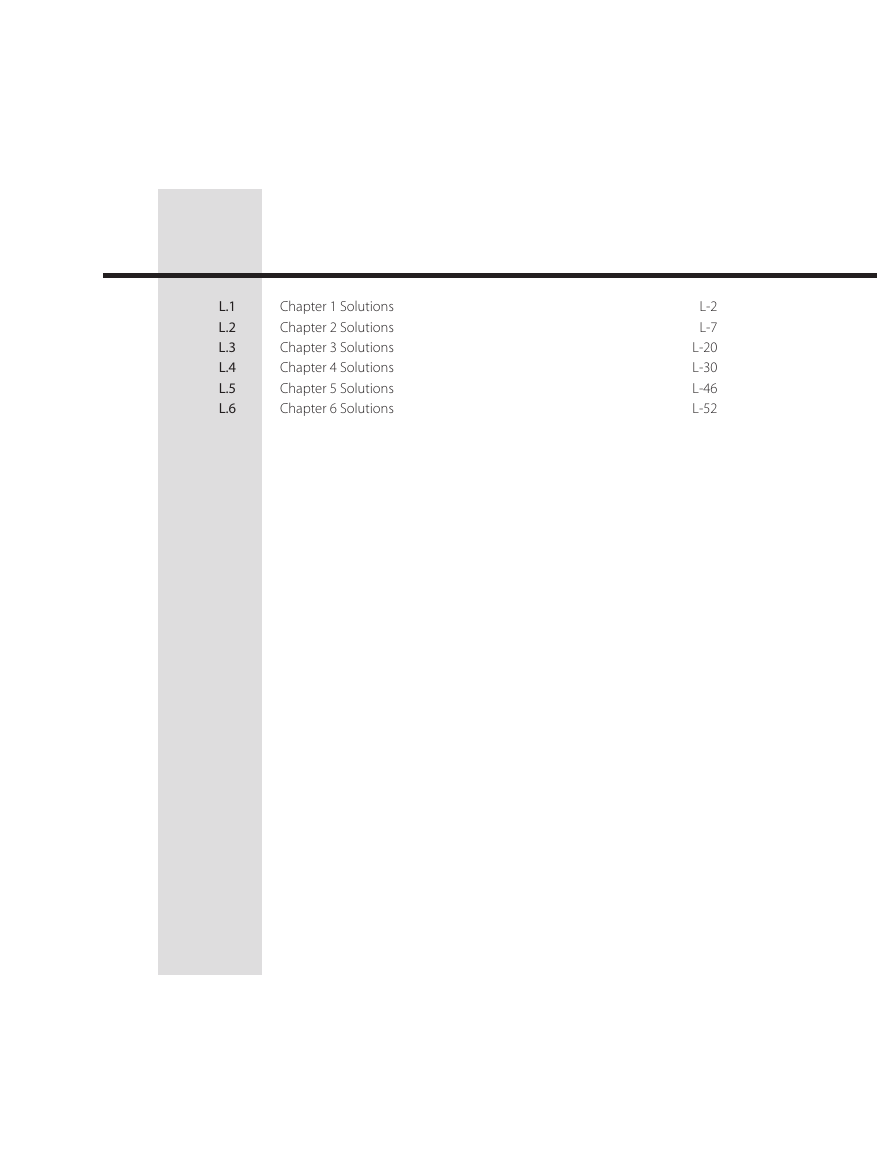
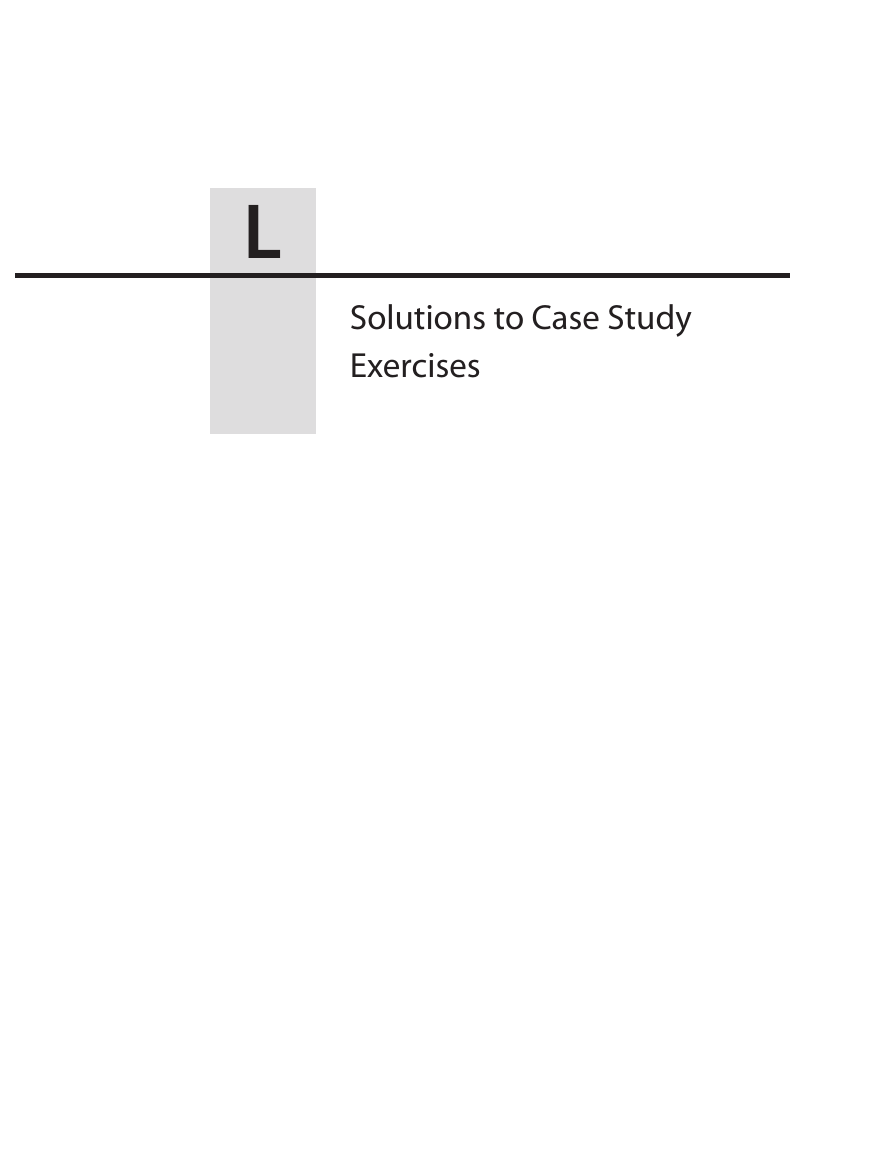
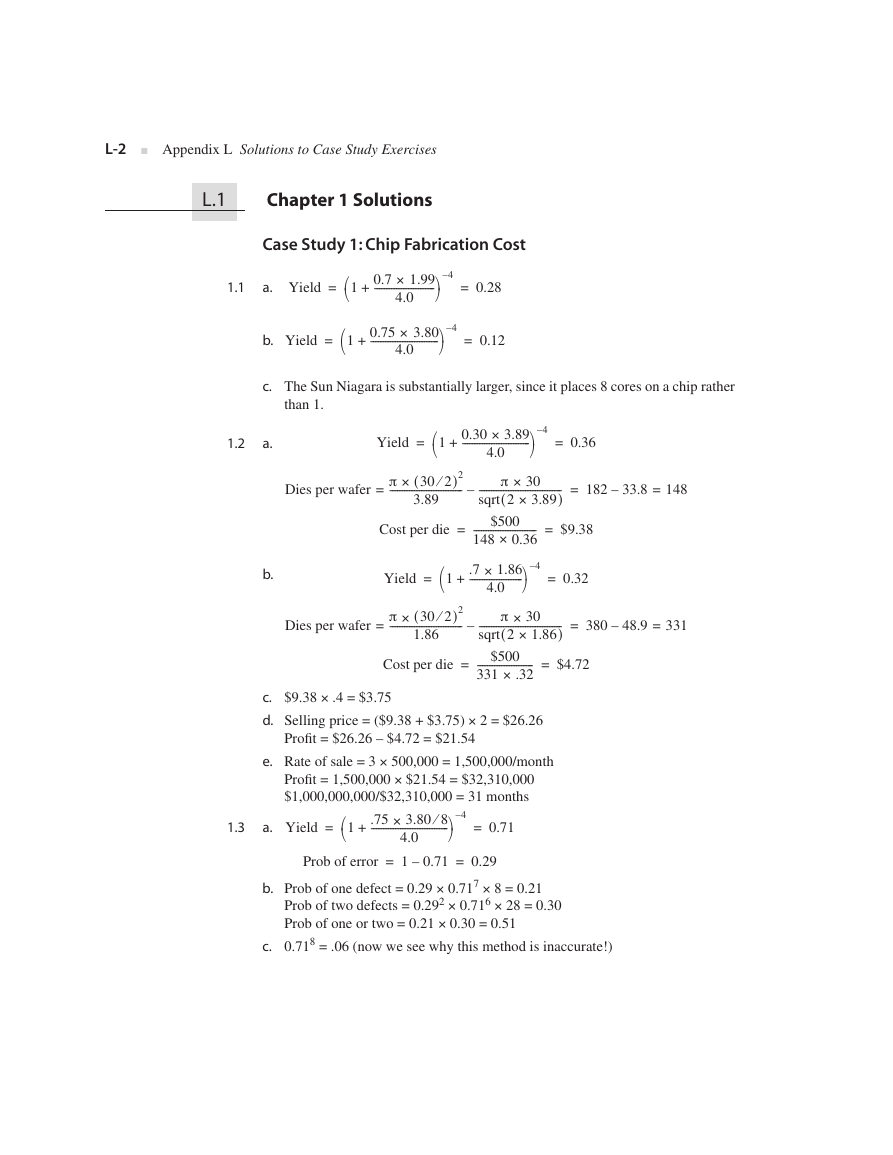


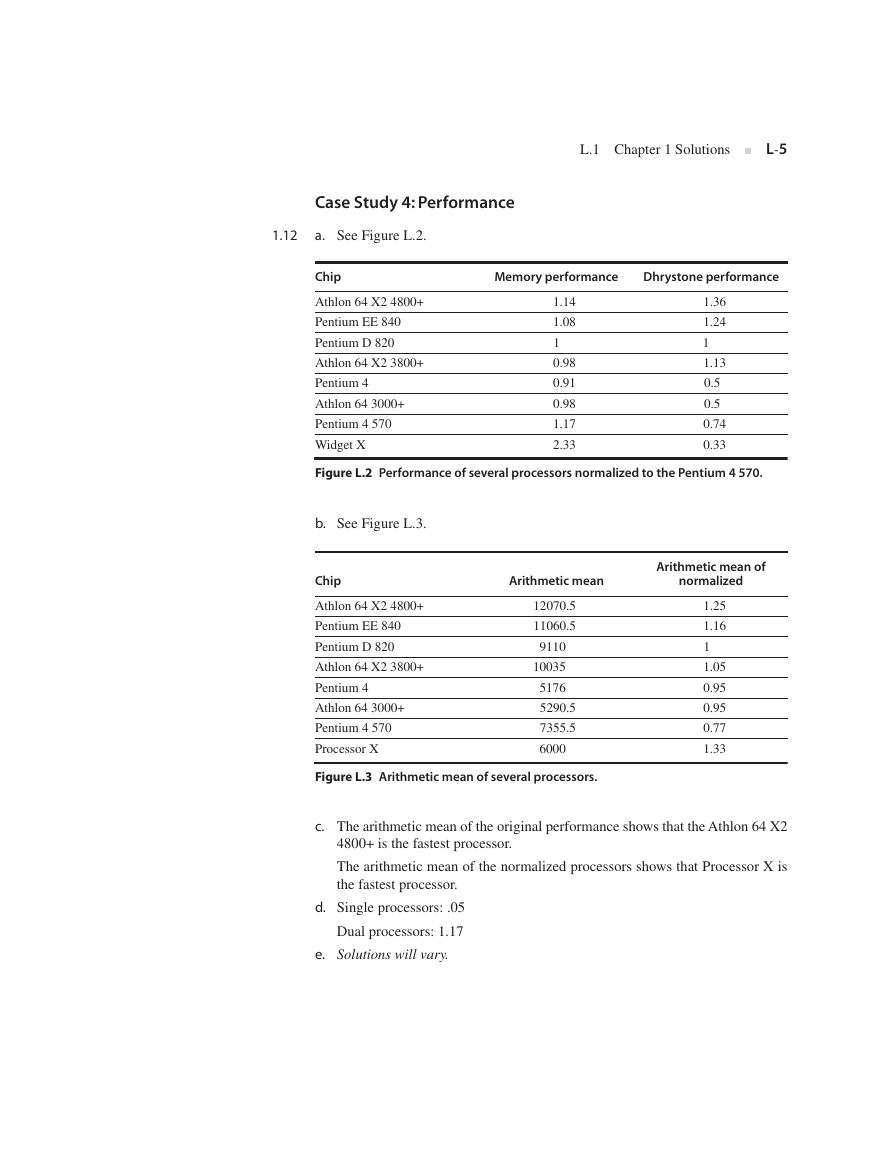
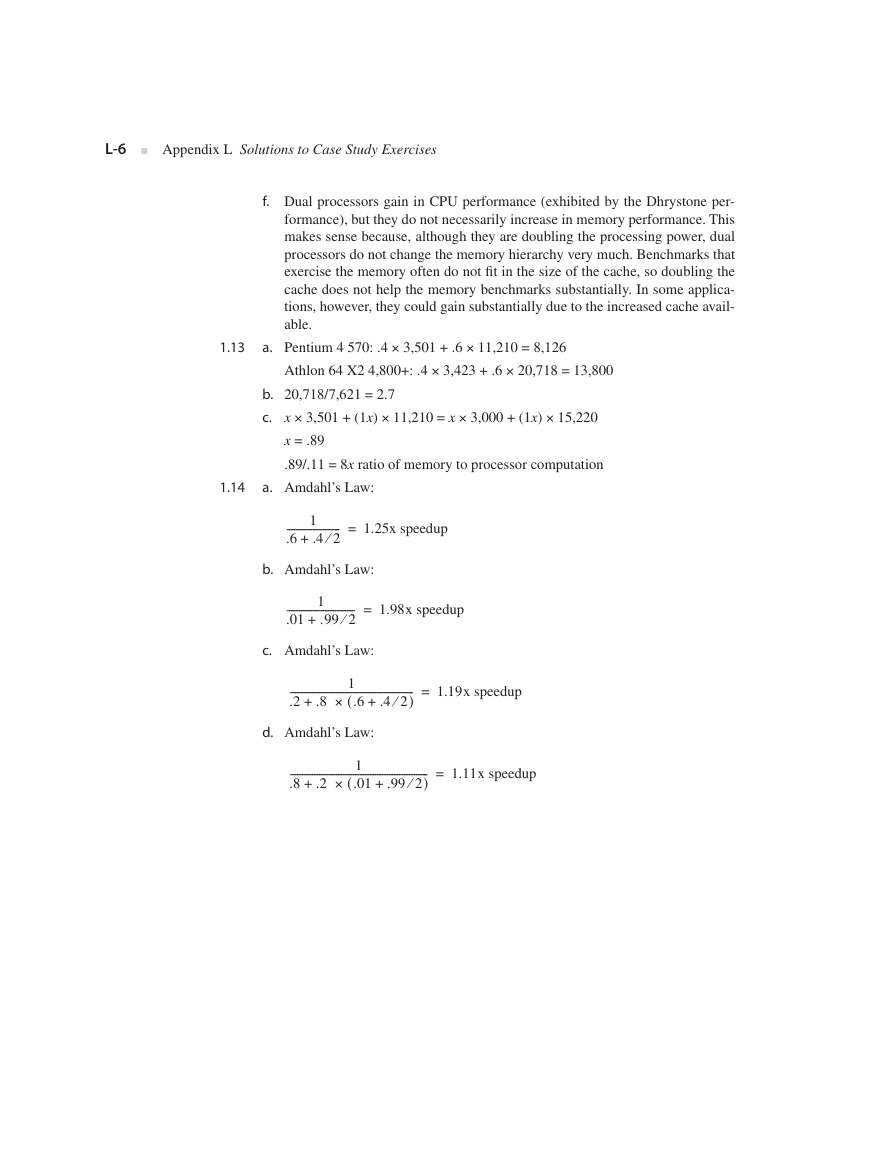
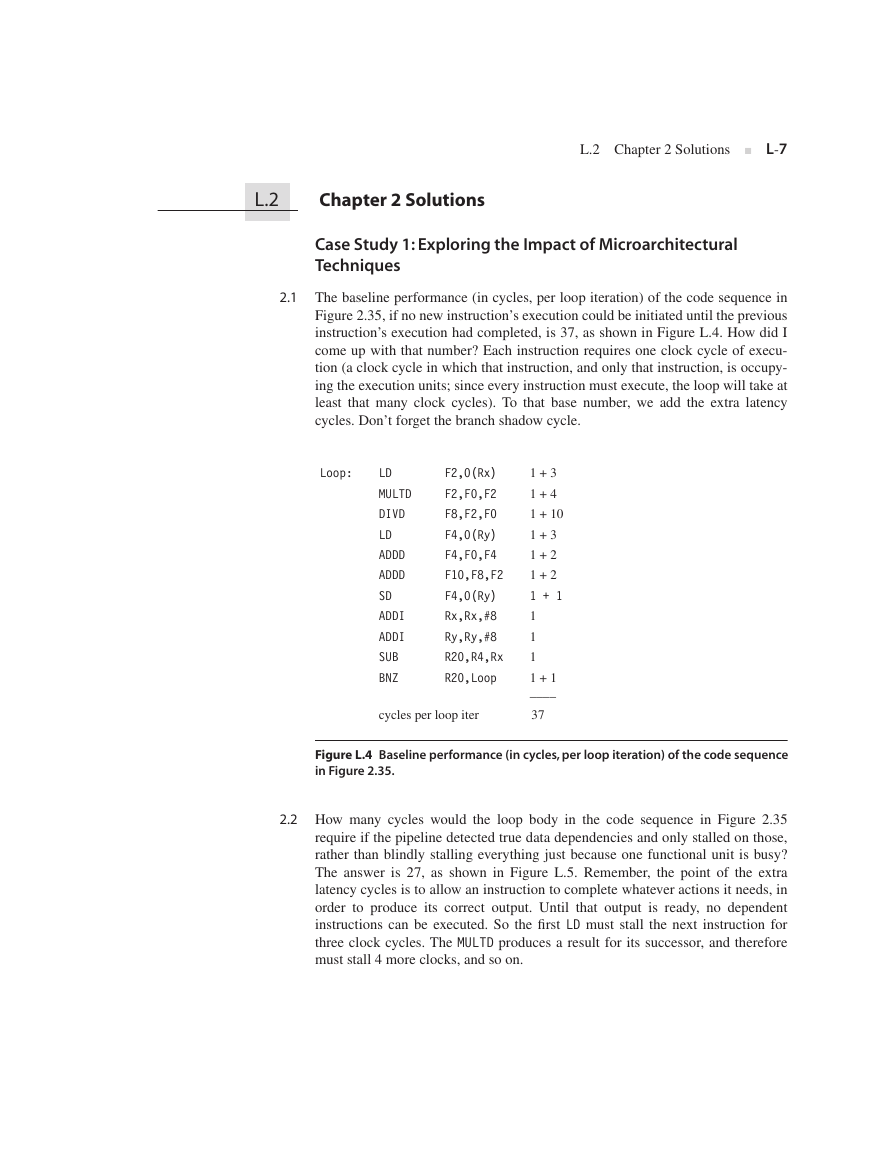








 2023年江西萍乡中考道德与法治真题及答案.doc
2023年江西萍乡中考道德与法治真题及答案.doc 2012年重庆南川中考生物真题及答案.doc
2012年重庆南川中考生物真题及答案.doc 2013年江西师范大学地理学综合及文艺理论基础考研真题.doc
2013年江西师范大学地理学综合及文艺理论基础考研真题.doc 2020年四川甘孜小升初语文真题及答案I卷.doc
2020年四川甘孜小升初语文真题及答案I卷.doc 2020年注册岩土工程师专业基础考试真题及答案.doc
2020年注册岩土工程师专业基础考试真题及答案.doc 2023-2024学年福建省厦门市九年级上学期数学月考试题及答案.doc
2023-2024学年福建省厦门市九年级上学期数学月考试题及答案.doc 2021-2022学年辽宁省沈阳市大东区九年级上学期语文期末试题及答案.doc
2021-2022学年辽宁省沈阳市大东区九年级上学期语文期末试题及答案.doc 2022-2023学年北京东城区初三第一学期物理期末试卷及答案.doc
2022-2023学年北京东城区初三第一学期物理期末试卷及答案.doc 2018上半年江西教师资格初中地理学科知识与教学能力真题及答案.doc
2018上半年江西教师资格初中地理学科知识与教学能力真题及答案.doc 2012年河北国家公务员申论考试真题及答案-省级.doc
2012年河北国家公务员申论考试真题及答案-省级.doc 2020-2021学年江苏省扬州市江都区邵樊片九年级上学期数学第一次质量检测试题及答案.doc
2020-2021学年江苏省扬州市江都区邵樊片九年级上学期数学第一次质量检测试题及答案.doc 2022下半年黑龙江教师资格证中学综合素质真题及答案.doc
2022下半年黑龙江教师资格证中学综合素质真题及答案.doc